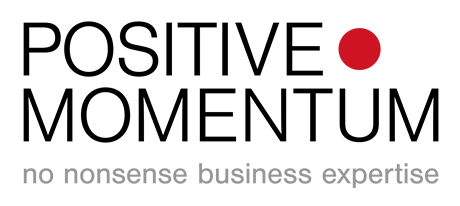By taking time to really listen to your customers.
Organisations start to fail when they stop learning from their customers. There are simple actions that can increase understanding of the emotional and rational factors that drive purchasing decisions and will keep your company relevant and in demand.
Many companies don’t really know why customers buy or don’t buy their services. If sales are broadly on target, then people don’t worry. Actually, this is the perfect time to challenge whether your organisation really does know its customers and how their needs may change over the next 6, 12, 18 months.
A core part of this exercise is to take a fresh look at how the marketing team build propositions that really resonate with prospects and will inspire action. Often, when I’m asked to investigate how much marketers know about their customers, it quickly becomes apparent that they know of them, but don’t really understand them and what drives them to make a decision in favour of one supplier over another. Getting inside the emotional factors that influence a final decision is critical. After all we want to believe we make choices based on logical and rational thinking, but the reality is that we are all driven by our emotions, be that fear of making the wrong choice or pride that we made a good decision.
Every company talks to its customers. And that’s the thing, they’re mainly talking ‘to’ which is really the same as talking ‘at’. it’s certainly not about listening. Then they tell me they did some research. An online survey, or maybe they got a research company to do a few telephone interviews. Both valid, but both remote and impersonal.
When I ask about the last time a member of the marketing team went out to see customers and prospects to learn more about them personally, face-to-face – well, there’s often silence. One would think that customers are scary, dangerous people. Actually, they’re just like everyone else, they don’t want to waste time and they love to talk about their business to people who are genuinely interested and want to learn and help them.
Marketers are consumed nowadays by metrics. Two years ago I managed to get my then 17 year old daughter work experience in an exhibition company that runs a major fashion show. Jess is big into fashion and wants to be a designer. Working at the show seemed a good way to learn more about how this part of the industry works. The show was great. Pre-show was dull. Tied to a desk looking at spreadsheets, data inputting, sending emails asking if people are coming to the show. The experience taught her that marketing is not about people, about emotions and communication. Instead it’s just about sending messages via email, Instagram etc and monitoring the response with performance judged on quantity not quality of interaction. When I asked Jess what she had learnt about visitors and exhibitors at the show, she said nothing, they’re not people, they’re just numbers. Harsh perhaps, but an interesting perspective from a 17 year old.
In pursuit of measuring the effectiveness of marketing activity by monitoring data, companies need to be wary of losing sight of the customer, and of developing marketers who don’t have a real connection with their customers. After all, how can you connect with your customer when you’re stuck behind your desk in your company’s offices? That’s not the real world, not the world your customers inhabit.
I love it when clients tell me about their latest win. They are rightly proud. When I ask them what they did that worked so well, every time it comes back to interaction with the customer. Spending time in their offices, factory, laboratory, running workshops, asking questions and learning how they work and how their product can help them deliver a better service to their customers.
They built understanding, they built relationships. Not that hard, but it takes time and effort.
When Sales and Marketing work as one team and pool their knowledge of customers, the uplift in results is significant. There are actions you can take to build better understanding of your customers, whether you’re a sales person focused on hitting targets or a marketer feeling trapped behind a desk analysing endless lists of customer data and PPC results:
Go see customers!
Every week, spend half a day visiting one or two customers at their office, shop, factory, service centre. Prepare by researching their business and developing some BGQs, bloody good questions, not about your product or service but about their business – their objectives, targets, position in the market, and the pressures and ambitions of the people you are talking with. Go to listen. Go to learn.
Use win / loss reviews
When you win, talk to the customer and ask them to identify the factors that made them choose your company. How did they analyse and compare your proposal to your competitors? Internally, look at how you managed to turn that contact into a lead, then into a prospect and finally a customer. Who was involved – functions, people. When? Build a flow-map of the sequence of actions you took.
Use case studies as a way to open doors
Most companies recognise the importance of case studies in the sales process, after all they know that customers are the best brand ambassadors they can have. Use it as a mechanism to talk to people in different roles and functions, not just the usual ones you deal with. For tech companies, it’s a great way to get outside the IT Dept. Go and see people in operations, finance, marketing, service delivery. You’ll be amazed what you learn about the company, the market, your competitors.
If your client refuses permission to publish a case study in the public domain, they are still a valuable exercise because it shows that you want to learn from the win and, in the process, remind them why they chose your solution over competitors. That’s why I always suggest case studies are part of the contract negotiations, they show you value the client and want to talk publicly about the work you are going to do together.








